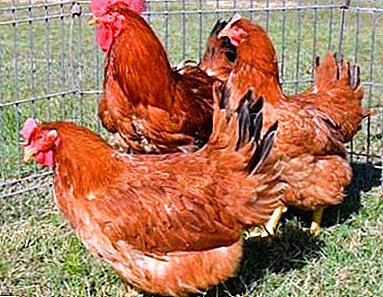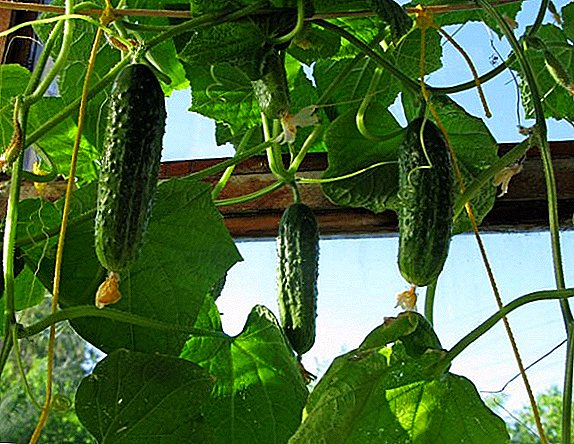 In homes, utility rooms, greenhouses or garages often set a long-burning furnace Bullerjan. The unit is a unique, easy-to-install structure that combines the functions of a gas generator and a heating device. Such a device can be designed independently, although this will require certain drawings, equipment and materials.
In homes, utility rooms, greenhouses or garages often set a long-burning furnace Bullerjan. The unit is a unique, easy-to-install structure that combines the functions of a gas generator and a heating device. Such a device can be designed independently, although this will require certain drawings, equipment and materials.
We will talk further about the principles of operation of this furnace, its advantages and disadvantages, and also tell in detail how to make buleryan on our own.
History of
The inventor of the furnace is an ordinary Canadian Eric Darnell, who at that time lived with his family in Vermont (USA) and was installing special steel pipes in open fireplaces.
Having practical knowledge and experience in this area, the man was desperately trying to increase the heat transfer from the wood-burning stove in his home. But every day he noted the high costs of fuel lumber and the absence of the expected heat.
Therefore, I decided to improve the heating system of my house.
Did you know? The ancient Romans in the I century BC, already invented a primitive heating device called hypocaust. The essence of his work was reduced to heating furnace floors with flue gas. For this, special underground zones were provided.
And in 1977, the so-called potbelly stove appeared, working with the convection effect. From the free flow of hot air, it is called Free Flow.
Darnell didn’t even expect such an amazing result: the unit allowed the heat to evenly spread throughout the house, with a full set of fuel, its combustion lasted up to 10 hours.  Since then, many homeowners have become interested in developing Eric. Among them was the German entrepreneur Erhard Knefler. Being on a business trip in one of the Vermont bars, he discovered a strange device with excellent heat dissipation.
Since then, many homeowners have become interested in developing Eric. Among them was the German entrepreneur Erhard Knefler. Being on a business trip in one of the Vermont bars, he discovered a strange device with excellent heat dissipation.
Local lumberjacks told a foreigner about so-called Canadian stoves, which had already been produced in Canada by then.
The meeting between Knefler and Darnell ended with the transfer of the right to distribute a miracle invention in Europe. After receiving the patent, Erhard founded the company "Energetec", and the furnace was named Bullerjan.
By investing minimal funds in business promotion, the German entrepreneur managed to win the respect of customers and the dedication of the first distributors. The unit in the size of 100 times met the expectations and became popular in many countries.
At the same time, during its forty-year history, it has not undergone major changes in the design, because the initial calculations were made very competently.
Did you know? In the 9th century, Europe heated its houses with stoves, which were a hearth laid out of stones. The disadvantage of such heating was acrid smoke that spread throughout the monastery. In the Middle Ages, special wooden "chimneys" were attached to them.
Since 2012, Erhard Knefler’s company has been transformed into Bullerjan GmbH, but has retained the entrepreneurial spirit of its founder, as well as the main principles of creativity and innovative approaches to the inventor of the kiln.
Today in Europe, the classic model of boulery is presented in 3 types, ranging from 1900 to 3390 euros. It is characteristic that due to the low solvency in Ukraine, the original furnaces of the German brand are not sold.
But local manufacturers took care of their analogues, the cost of which varies between 120-210 euros. In the masses, they are called "stoves".
Oven device
The heating rate and high heat transfer are the main characteristics of the device, which ensured its worldwide popularity.  In this case, the design does not require any additional costs and consists of:
In this case, the design does not require any additional costs and consists of:
- curved heat-exchange steel pipes;
- primary and secondary chambers;
- chimney pipe with a regulator;
- ashpit;
- blew;
- injector;
- boot front door;
- power regulator and door handle.
Externally, Buleryan is a one-piece design. It includes a cylindrical steel case, inside of which there is a two-level firebox. In addition, in the upper and lower zones of the device there is a system of pipes that bend a furnace in a sinusoidal manner, projecting only one third beyond its limits.
Important! The best heat dissipation have firewood from oak, apple and pear. Elm and cherry logs are not recommended because they smoke heavily. Pine rocks are characterized by worse properties: in addition to poor burning, they contribute to the formation of resinous deposits in pipes, which impairs the operation of the furnace.
Principle of operation
The mechanism of operation of the unit is simple: the lower rows of pipes provide access of cold air to the furnace, and the upper ones release heat from it. Such heat exchange allows pumping up to 6 cubic meters in 60 seconds. m
In this case, the heating proceeds smoothly, and very hot streams are produced very soon at the exit.
The incoming and outgoing air eliminates the problem of atmospheric discharge, which often happens with traditional stove heating. The smallest construction can heat about 5 cubic meters per minute. m
Video: the principle of the furnace type buleryan And the largest units under the power of 200 times more. For example, to warm up a one-room apartment of 40 square meters. m, you need only about half an hour. This is a very convenient solution for owners of country houses.
An added bonus is that the wood does not immediately burn in the furnace. From the primary chamber they enter the secondary chamber, where they continue to smolder at a very high temperature.
Thus, afterburning of the air-gas mixture allows to increase the efficiency up to 80%. Besides the furnace buleryan is absolutely safe in operation. This is possible due to limited access to the furnace structure.
Read also about the principle of operation of the stove-stove, Dutch oven and long-burning heating furnace.
Note that the combustion process is not limited to the limits of the furnace. The pipes burn down the remnants of pyrolysis gas.
That is why the design provides for a meter horizontal plane at the exit from the furnace, as well as a large-format door with a hermetic seal. It is in this zone that the combustion is retarded.
In the place of the bend of the chimney, the original stove includes an economizer. This is where the final burnout stage occurs. In general, the combustion process is not uniform, it is characterized by periodic flashes and attenuation.  According to experts, to achieve such an effect on improvised structures, the pipe must be properly insulated. For this, any heat insulating material is suitable: mineral cardboard, basalt wool.
According to experts, to achieve such an effect on improvised structures, the pipe must be properly insulated. For this, any heat insulating material is suitable: mineral cardboard, basalt wool.
Did you know? The inventor of the world's first air heater is Nikolay Amosov. In 1835, he brought to life the generalized ideas of the scientists of Lvov and Meisner, creating the so-called Amoss stove, which, by the principle of its work, was very similar to the Canadian buleryans.
Types of buleryana
The appearance of various types of Canadian stoves due to their power and dimensions. In modern production there are the following types of bulery:
- Long burning constructions - designed for premises whose volumes do not exceed 150 cubic meters. m. Characterized by a power of 8.4 kW, a chimney diameter of 120 mm, a weight of 73 kg, and dimensions of 835x436x640 mm.

- Water circuit designs - calculated on the premises of 100-1000 cubic meters. They are characterized by a power of 6-35 kW, a chimney diameter of 12-20 cm, a weight of 57-169 kg and dimensions of 70x45x65-103x77x120 mm.
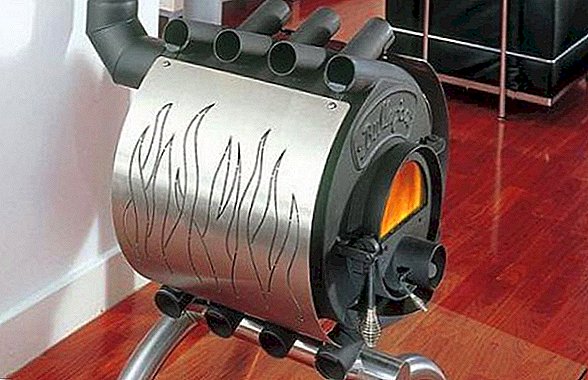
- Akvapechi - designed for premises up to 250 cu. m. Characterized by a power of 27 kW, a chimney diameter of 150 mm, weighing 57-169 kg and dimensions of 920x680x1140 mm.

- Sauna stoves - provide a compartment for stones with a capacity of 75-100 kg and a 30-liter water tank. In 45 minutes the room warms up to +100 ° С.
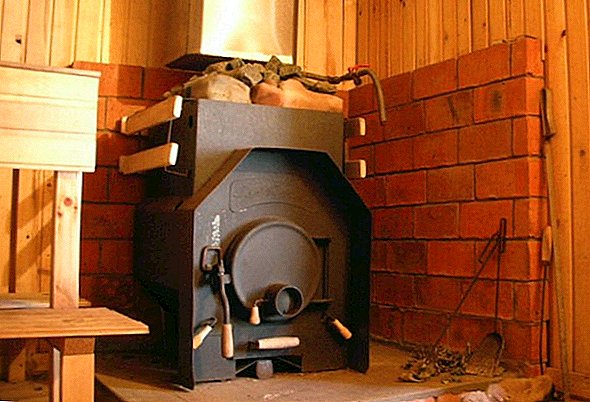
- Gas generator designs - calculated on the premises of 100-1000 cubic meters. m. Characterized by a power of 6.2-34.7 kW, a chimney diameter of 120-150 mm, weight of 52-235 kg, dimensions 640x436x605-950x676x1505 mm.
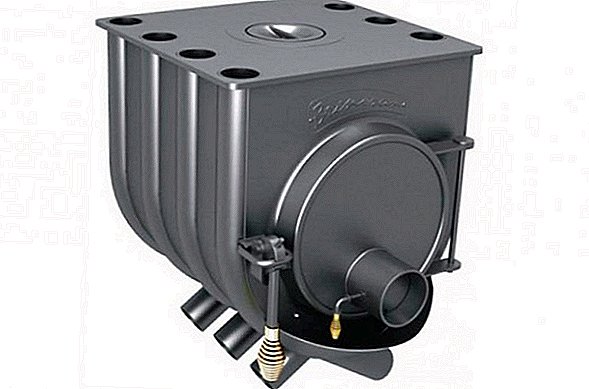
- Fireplace stoves - designed for space heating up to 170 cu. They are characterized by a power of 12 kW, a chimney diameter of 120 mm, a weight of 65 kg and dimensions of 270x640x575 mm.
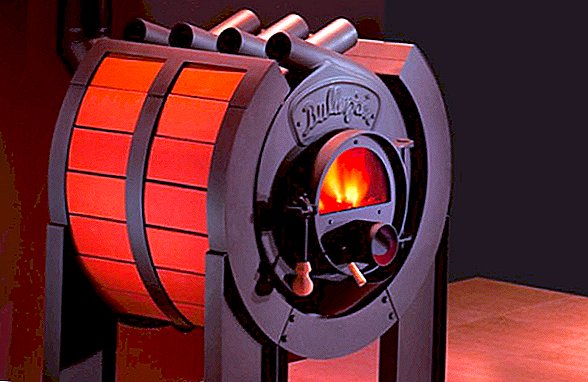
Each type of plate provides a certain number of pipes and the length of the logs.
To decide which model is right for you, you need to find out the volume of your room and the intended functionality of the unit.
Important! You can not install buleryan in the corners. The minimum distance of the unit from the walls should be 20 cm. Otherwise, for your own safety, you will have to protect small rooms with metal sheets from the inside..
With water circuit
Modern developments have allowed to heat large rooms, divided not only into rooms, but also into floors.
We are talking about units with water circuits. Their features are compact dimensions, quick installation, economical fuel consumption and long-term burning.
Aquaconstructions are suitable for water heating systems. In such a furnace, the water circuit takes up to 70% of the furnace. Thus, the water is evenly heated in seconds, preventing heat loss.
Note that in such structures there are no sudden temperature changes. In terms of efficiency, they are very close to gas generators. In addition, re-loading of fuel can be carried out at 12-hour intervals.  However, even with such a strong case, buleryan with a water circuit can not be called perfect. The fact is that pyrolysis gases, getting into the secondary furnace, burn only 70%.
However, even with such a strong case, buleryan with a water circuit can not be called perfect. The fact is that pyrolysis gases, getting into the secondary furnace, burn only 70%.
Yes, and the resulting condensate can significantly reduce heat transfer. Therefore, experts advise to protect the chimney with heat insulation.
We recommend reading about how to build a swimming pool, bath, cellar and veranda, as well as how to make a brazier, pergola, gazebo, dry stream, waterfall and a path of concrete with your own hands.
How to stoke
In order for the Canadian stove to work for a long time and efficiently, it must be properly used and ensure periodic maintenance of the system. It is recommended to use dry firewood, sawn timber waste, paper, peat or wood pallets, as well as briquettes as fuel.
In no case should liquid combustible materials be poured into the furnace, or coal or coke should be filled.
Do not forget that the device is constantly working in intensive mode. Experts advise to carry out the first fire box with open windows and doors. It is preliminarily important to open both dampers for good traction.
Video: installation and launch of Bulerián After that, inside the oven casing in the form of a triangle build paper and wood chips.
The door can be closed only when the materials break out. With good burning after 5-10 minutes, close the rear flap of the regulator, and the front select the mode of operation of the buleryana.
Important! It is strictly forbidden to load fuel when the smoke damper is closed and the valve of the front regulator is closed..
Keep in mind that the efficiency reaches its maximum when the rear flap is hermetically closed and the front flap slightly ajar. Adjust the working intensity of the stove by changing the positions of the flaps.
The operation of buleryana includes not only the periodic laying of firewood, but also the cleaning of the firebox from ash and soot. Each time, before adding a new portion of fuel, fully open both doors. This will increase the burning. After loading the regulator must be covered so that the material smoldered.  Ash is cleaned when the furnace is completely cooled. To do this, it is better to use a metal scoop and a bucket covered with a damp cloth. No need to completely select all the ashes. Leave a small layer 5 cm high.
Ash is cleaned when the furnace is completely cooled. To do this, it is better to use a metal scoop and a bucket covered with a damp cloth. No need to completely select all the ashes. Leave a small layer 5 cm high.
Sometimes at dachas and in rooms that have been idle for a long time without heating, there is no traction during the first kindling of a Canadian oven.
We advise you to read how to build a formwork for the foundation of the fence, how to choose the material for the fence, as well as how to make a fence with your own hands: from a chain-link mesh, from gabions, from a brick, a metal or wooden fence from a fence.
Experts advise to use paper instead of wood logs to solve the problem. Do not forget about the care of the chimney.
It should be cleaned at least once a season from soot through a special hatch. By the way, the lack of traction can be the result of tar and condensate accumulated in the pipe.
Although the buleryan and are considered the safest stoves, but it does not hurt to comply with the rules of their own safety. This is especially true for homemade units.
Important! Cleaning ash in the buleryan should be done when its level reaches the bottom edge of the loading door.
When working with such a stove categorically unacceptable:
- Leave fuel materials near the structure and in front of the fire.
- Dry on the surface of the body of firewood, clothing, shoes and other highly flammable objects.
- Use for fueling fuel oil, as well as logs, whose dimensions exceed the dimensions of the furnace.
- Store in a room where buleryan costs fuel materials that exceed the daily stock.
- Replace the chimney ventilation and gas channels, as well as use for this ceramic and asbestos-cement materials.
Installation
The wood pyrolysis furnace is very sensitive to illiterate installation. Therefore, this stage requires maximum responsibility. After all, every mistake will affect the productivity and heat transfer unit.
For a start, it is important to take care of the unhindered access of convection air flows. Otherwise the room will be badly and unevenly heated.
Video: how to install the furnace buleryan In the installation process it is also important to comply with fire safety standards, because such a design warms up to + 200-300 ° С. Therefore, special fire-prevention rassechek not to do when laying chimney pipes, as well as a protective screen or brick frame.
Important! When assembling a self-made design, position the chimney against the direction of gas flow, and not along the way. This will help keep the floor intact from the wood tar flowing from each hole in the stove. Then they can go back to the chimney and burn.
Experts advise to mount buleryana boiler on a solid coating of non-combustible material. The walls in the boiler room must be plastered, lined with tiles or protected by steel plating.
Dimensions and weight of the furnace design allow for installation without the construction of a special concrete foundation.
The only exceptions are design variations that are based on the brick frame for the case.
Canadian stoves are good because they can easily be styled as a fireplace. In this case, you need to take care of the stand with a height of no more than 30 cm, and put the brick in such a way that the furnace door rises above the floor level by 45 cm.
It is also important to leave convection valves for air circulation. In most cases, when installing such kind of furnaces, the wood flooring is simply covered with heat insulating and non-combustible material.
Many models of buleryans are designed exclusively for work in an open area, without any partitions. If you plan to heat such a unit multi-room or multi-storey building, you will need air ducts.  It is important to pay attention to this point, especially when it comes to construction.
It is important to pay attention to this point, especially when it comes to construction.
After all, such constructions cannot function without special ventilation ducts leaving the furnace convectors. Experienced craftsmen advise them to make small diameters, which contributes to improved traction.
Important! In no case should children be charged with the process of heating. Do not forget about the standards of fire safety.
When distributing heat pipes in rooms, consider the following rules:
- Air ducts outgoing from Bullerjan cannot be located in the system P- or U-shaped.
- The maximum length of the sleeve is 3 m.
- To increase traction in private homes, the installation of fans with noise up to 35 dB is recommended.
- When laying pipes through walls, tiled floors, it is important to observe the fire safety rules (similarly as in the case of the installation of the chimney).
We make our own hands
You can build a classic model of boulery at home.
But note that this idea requires special knowledge and drawings. We will try to provide the most accessible step-by-step instructions for this process.
If you are a beginner in this area and feel an acute lack of experience, it is better to turn to specialists for help.
Inventory and materials
For further work we will need:
- sheet steel 6-8 mm thick (for the construction of the hull);
- metal pipes with a diameter of 5-6 cm;
- welding machine;
- installation for pipe elbows;
- pipe bender;
- set of related tools.
Work stages and drawings
The whole process of building the unit can be briefly described in several stages:
- Подготовка нужного количества изогнутых труб.
- Сооружение приспособлений для сбора конденсата и отводки дыма.
- Конструирование дверок топочной и регуляторов режимов работы печки.
- Assembly of the tubular frame and arrangement of the combustion chamber.
- Installation of doors and dampers.
 The very first task with which to start building the furnace is to prepare the drawing. We offer a ready-made version of the most popular model of the boulery.
The very first task with which to start building the furnace is to prepare the drawing. We offer a ready-made version of the most popular model of the boulery.It will be useful for you to learn: how to remove the paint from the walls, and whitewash from the ceiling, how to glue wallpaper, how to run water in a private house, how to install a shower cabin in an apartment, how to put a wall outlet and a switch, how to make a plasterboard partition with a doorway or sheathe wall plasterboard.
Step-by-step instruction
When you have the necessary tools, materials and drawings in your arsenal, you can get to work:
- First of all, let's start with pipes that need to be arched for the future framework of the firebox. Their number may vary depending on the power of the unit and its dimensions. Most often use 8-10 pieces. To work, you must have workpieces with a length of 1.2-1.4 m. Using a pipe bender, bend the desired shape, adhering to a radius of curvature of 22 cm. Consider that after processing, all segments should be exactly the same. They will be placed in a checkerboard pattern.
- We now turn to the manufacture of a T-shaped fixture, which will prevent internal smoke and moisture accumulation. At the bottom of this design, it is important to provide a tap that periodically needs to be opened to remove excess water. In order for the unit to work fully, you will need to equip it with a special damper to control thrust. It will facilitate the passage of smoke. This part is made from a circle attached to a metal calm that corresponds to the diameter of the pipe with a special hole (just a quarter of the part is cut out).
- The next step allows you to move to cutting the front door for a blower. It must be equipped with a blind valve that will ensure high productivity of the furnace. Experts advise to provide a spring mechanism that will ensure the fixation of the regulator in the desired direction.
- The most difficult in the construction of self-made buleryan is the front door through which the fuel is loaded. After all, it must be tight to the body. Experienced craftsmen advise to solve this problem by cutting out several rings up to 4 cm long from a pipe with a diameter of 35 mm. Do not forget to leave a small hole in the front wall of the case for fastening one of these parts.
- Then weld both rings on the door, make an asbestos gasket between them using a special cord and install a valve prepared earlier.
- Go to the tubular blanks. Using a welding machine, attach injection tubes (15 cm in length and 1.5 cm in diameter) to the first and second pipes, which should be installed in the sawn holes. This device will help to establish the relationship between the furnace body and the convection system.
- Now you can put together the entire structure. To begin with, make a frame out of all the pipes with a welding machine. Keep in mind that between them there must be space for steel plates that are welded separately.
- Then, the rear blank wall and the front panel are welded to the finished housing where the doors and controls will be attached.
- Now attach the doors to the hinges provided in advance and build the flap.
- At the final stage is to take care of the legs for the stove. It is better to make them from reliable tubular segments.
- The stove is ready. It can be connected to the chimney.
Video: making furnace Buleryan do it yourself
Important! When installing steel chimneys, keep a distance of at least 1 m from plastered wooden surfaces. Do not allow temperature increases of more than +90 ° C on the external surface of the chimney.
Advantages and disadvantages of the furnace
Compared with modern boilers and stoves, the Canadian-German buleryan stands out for its many positive qualities:
- rapid air heating, even in large rooms;
- the ability to heat a small unit with a duct, multi-storey and multi-room houses;
- ease of installation and operation of the unit;
- high efficiency (80% with proper use and timely cleaning);
- low fuel consumption and burning time (full fueling of the firebox lasts 10-12 hours).
However, even with so many advantages, the stove is not perfect.  Users are pleased with her work, but among the shortcomings are:
Users are pleased with her work, but among the shortcomings are:
- restrictions on the choice of fuels;
- loss of a significant part of the generator gas (disappears into the pipe);
- the need for chimney warming (the process is important and unavoidable, regardless of the tubular material used);
- the stove, although small in size, but requires a lot of space for fire safety purposes;
- the need to remove the pipe 5 m above the surface so that the buleryan would not smoke (if this is not done, due to incomplete combustion of fuel, the room will be filled with smoke);
- an unpleasant smell in the boiler room, the appearance of which is due to the heating of the condensate emitted.
Important! Bulerians can work effectively in residential and administrative premises, in which no more than 2 floors are provided and no more than 25 people reside.
In fact, the buleryan are highly efficient and deserve attention for their simplicity. Moreover, such a design can be made by yourself. We will not be cunning: it is impossible to call this business simple. But all the difficulties of the process are associated with the complexity of the tasks.
For some, the creation of self-made units takes up to 3 months, while others, if they have a complete set of all the parts, they manage to assemble the structure in 1 day. We hope our article will help you understand the principles of operation of the furnace and build the same one yourself.
Feedback from network users
Truly furnace buleryan comfortable and economical. But the lifetime is not great. If you stoke the entire period without ceasing, the furnace can withstand 3 seasons. Then begin repairs. Brew burned places. After 2 years we change the oven. That is - with intensive use, the service life is 5 years.
Tried to be heated by gas cannons ... Threw it out in a few days. People are being poisoned. Tried gas convectors ... Quickly fail due to cement dust that they like a vacuum cleaner to pull over.
Tried diesel heaters ... On plaster such a fungus went !!! That only freezing the walls and saved.
Central gas is only advisable under the Complex Construction Contract. High price system.
Electrics disappear in 90%. Not enough power for heating.











